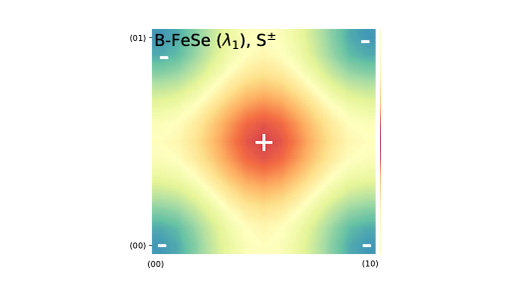Materials Science Software Enables High-Fidelity Answers to Basic Principles Questions
Upcoming Workshop Will Offer Questaal Tutorials and Introduction to the Software Suite
To understand how things work, we must think small. Really small. Processes that affect how materials appear or behave happen at the atomic level. That is a key place for researchers to start, but such atomic-scale challenges are difficult because they require that researchers solve the underlying equations of quantum physics, which are computationally intensive and expensive.

Questaal, a software suite of electronic structure programs from the National Renewable Energy Laboratory (NREL) that answers condensed matter theory questions about solid-state structures, can help researchers answer those atomic-level questions with a theory based on Feynman diagrams. Questaal simplifies computationally intensive processes by solving quantum physics equations efficiently and with high fidelity.
Understanding properties at the atomic level is the key to unlocking better materials development.
"Questaal can give you a high-fidelity picture of how things behave at a very small scale, which is crucial to understanding things at a large scale," said Mark van Schilfgaarde, chief theorist at NREL.
How Questaal Develops a Clearer Atomic-Level Picture of Materials
Questaal allows researchers to model the properties of materials with high fidelity by utilizing a Green's function formalism based on Feynman diagrams, which are built into the software. By solving those basic equations, the software helps answer key questions without a need for empirical models or assumptions. The properties at the macroscopic scale are determined by processes at the microscopic scale. To control desirable physical and chemical properties, researchers must have a full understanding of the underlying process. For instance, understanding how one molecule transforms into another molecule or why chemical reactions change when light is applied informs understanding of the material at a larger scale.
A key advantage of Questaal is that it provides high-fidelity answers to materials questions beyond what density functional methods can produce, and it does so at lower computational cost than using quantum chemical methods.
"Questaal's methods are sort of like in the Goldilocks story—they provide an efficient, 'just right' middle path with high-fidelity answers," van Schilfgaarde said. "They're computationally more expensive than density functional methods, but they're much higher fidelity. They're not quite as accurate as quantum chemical methods, but the cost is much lower and scaling with system size is better."
While density functional theory is a predominant method for understanding materials on the atomic level, it provides approximations that are not always accurate. In density functional methods, the approximations are often too severe, making results insufficiently accurate to quantitatively explain a material property; with greater degrees of freedom comes greater power to find significant results.
Questaal employs a self-consistent form of many-body perturbation theory, starting with the GW approximation—which enables it to accurately approximate the state of interacting molecules. Questaal's approximations help explain basic principles related to the behavior of materials. Recent Questaal-involved research has looked at what explains the origin of superconductivity in iron selenide and also describing excitons in strongly correlated transition metal compounds such as NiO and MoS2. Though the subject matter is very different in the two cases, both kinds of studies can help design a new kind of qubit for quantum computers.
Seeking the Essence of Materials and Molecules
Usually, the operating principles of practical devices (such as a solar cell or catalyst), depend mainly on a few core properties (such as the solar cell's bandgap or the catalyst's reaction barrier), and typically these properties are determined at the atomic scale.
"We developed Questaal to understand the basic properties and behaviors of molecules," van Schilfgaarde said. "While other models can provide an approximation of reality, we're looking at better approaches to provide a truer description of atomic-scale properties that make understanding materials at the larger scale more effective."
Join NREL for a Multiday Questaal Workshop
NREL is hosting a multiday workshop on March 11–14, 2024 that will provide a general introduction to ab initio many-body perturbation theory and Questaal applications. Attendees will be able to participate in tutorials on using the code.
Explore the Questaal software suite.
Last Updated May 28, 2025
